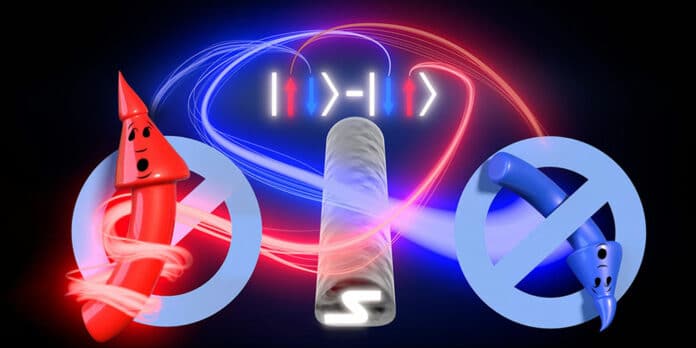If two particles are entangled, their properties are also closely linked, even when far apart. The entanglement between two electrons forms so-called Cooper pairs in a superconductor. These pairs are responsible for the lossless electrical currents in which the individual spins are entangled.
Scientists at the Swiss Nanoscience Institute and the University of Basel’s Department of Physics have removed electron pairs from a superconductor and spatially isolated the two electrons for several years. Two parallel quantum dots, nanoelectronic structures that only permit one electron to flow through each one, are used to accomplish this.
Now, physicists at the University of Basel have experimentally demonstrated for the first time that there is a negative correlation between the two spins of an entangled pair of electrons from a superconductor. The study used spin filters made of nanomagnets and quantum dots.
Later, they used tiny magnets to generate individually adjustable magnetic fields in each of the two quantum dots that separate the Cooper pair electrons. Since the spin also determines the magnetic moment of an electron, only one particular type of spin is allowed through at a time.
The physicists were able to measure that the spin of one electron points upwards when the spin of the other points downwards, and vice versa, using a cutting-edge experimental setup.
Project leader Andreas Baumgartner said, “We have thus experimentally proven a negative correlation between the spins of paired electrons.”
First author Dr. Arunav Bordoloi said, “We can adjust both quantum dots so that mainly electrons with a certain spin pass through them. For example, an electron with spin up passes through one quantum dot, and an electron with spin down passes through the other quantum dot, or vice versa. If both quantum dots are set to pass only the same spins, the electric currents in both quantum dots are reduced, even though an individual electron may well pass through a single quantum dot.”
Andreas Baumgartner concludes, “With this method, we could detect such negative correlations between electron spins from a superconductor for the first time. Our experiments are the first step, but not yet a definitive proof of entangled electron spins, since we cannot set the orientation of the spin filters arbitrarily – but we are working on it.”
Journal Reference:
- Arunav Bordoloi, Valentina Zannier, Lucia Sorba, Christian Schönenberger, Andreas Baumgartner. Spin Cross-Correlation Experiments in an Electron Entangler.Nature (2022), DOI: 10.1038/s41586-022-05436-z
